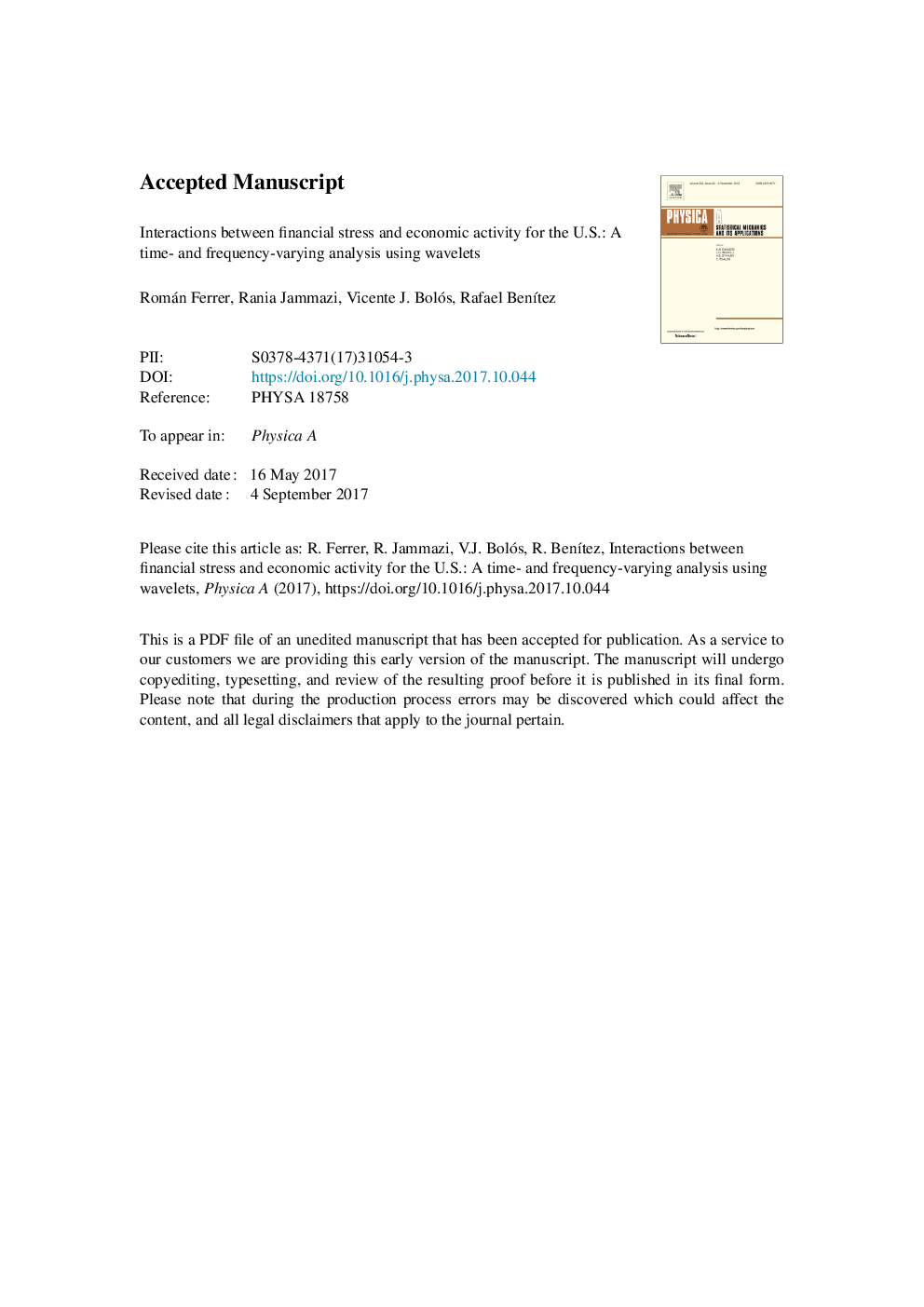| Article ID | Journal | Published Year | Pages | File Type |
|---|---|---|---|---|
| 7376586 | Physica A: Statistical Mechanics and its Applications | 2018 | 32 Pages |
Abstract
This paper examines the interactions between the main U.S. financial stress indices and several measures of economic activity in the time-frequency domain using a number of continuous cross-wavelet tools, including the usual wavelet squared coherence and phase difference as well as two new summary wavelet-based measures. The empirical results show that the relationship between financial stress and the U.S. real economy varies considerably over time and depending on the time horizon considered. A significant adverse effect of financial stress on U.S. economic activity is observed since the onset of the subprime mortgage crisis in the summer of 2007, indicating that the impact of financial market stress on the real economy is particularly severe during periods of major financial turmoil. Furthermore, the significant linkage between financial stress and the economic environment is mostly concentrated at time horizons from one to four years, demonstrating that the effect of financial stress on economic activity is especially visible in the long-run.
Related Topics
Physical Sciences and Engineering
Mathematics
Mathematical Physics
Authors
Román Ferrer, Rania Jammazi, Vicente J. Bolós, Rafael BenÃtez,
